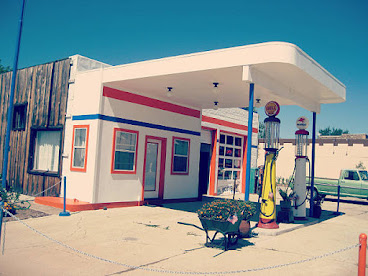Will an electric charger be your next gas station? - Mina Gorgyos
Electric cars keep coming, and the major oil companies are taking notice. Exxon Mobil and BP estimate that we could see 100 million electric vehicles on the road by 2040. Some suggest electric cars could kill the modern gas station. In the light of plans from Royal Dutch Shell, France’s Total, and BP, it seems possible charging could start to take over the gas stations. How realistic is it to imagine centralized charging for electric vehicles analogous to centralized fueling for gasoline and diesel vehicles?
If your next car is going to be electric, where you might “fill up” is a good and practical question that has to be resolved. Conventional wisdom holds that home charging with Level 1 (about 20 hours to charge a typical vehicle) or Level 2 (3–4 hours to charge) is the predominant answer, covering 90% of vehicle use. Direct current (DC) fast charging (taking as little as 20 minutes to charge) is viewed as the solution of last resort, something a driver turns to in emergencies or to reach far away destinations. But what if you don’t have access to a charger at home or work? With over 2.5 million electric cars on world roads today, we are starting to see electric car owners coming up with creative solutions to this problem.
A small but growing number of them are using public fast chargers as their primary charger. This trend is explored in a recent ICCT-UC Davis study of fast charging data from EVgo (Survey and Data Observations on Consumer Motivations to DC Fast Charge, EVS30), along with a survey at chargers. EVgo is one of the largest operators of fast chargers in the United States with over 500 locations nationwide. Complete event data from 238 fast chargers in California as well as data from a survey placed on 40 of them over a 70-day period (3.4% of unique customers took the survey) were analyzed to see exactly who is using fast chargers and for what reason. Preliminary data showed more than 50% of all fast charger usage very close to home, but we didn’t know why until the survey gave us some possible answers. That study of both sources suggested that about half of fast charging sessions were by drivers who don’t use home charging. For these people, the charging pyramid, which assumes home as the basis for all charging, and DC fast charging as seldom selected, is turned upside down. Those heavy users are primarily within 6 miles from home, a pattern similar to how gasoline stations are used.
So how many people fit this charging pattern? The number of unique user IDs using a fast charger more than 10 times per month at the 240 California sites compared to the number of cumulative Nissan Leafs sold in the state (assuming California represents 40% of the U.S. market) gives an estimate of 2.2% of Leaf drivers using a fast charger instead of home charging. But looking only at those who bought Leafs in 2016 or 2017, this number climbs to 6.7%. Likely some customers are using fast charging from another network provider making the percentage higher. Although much of the charging was free from Nissan for two years as a purchase incentive accounting for the increase in recent model years, one-third of frequent (more than 10 times per month) Leaf usage was from paying customers. Whether free or paid, drivers are showing us that it is feasible to use fast charging instead of home charging. If the pattern apparent in the usage data mentioned above holds true for other electric vehicle models, then more than 6% of all pure electric vehicle buyers might opt to use fast charging over Level 1 and Level 2 chargers at home or in public if fast charging is attractively priced. Further, even for those with home charging, the survey shows that fast chargers are being used by people on days when public Level 2 would have sufficed, but they don’t exist where people park. This highlights the role of fast chargers as backup in a nascent network of public Level 2 chargers.
As it ends up, substituting home charging for fast charging is important from a broader perspective, for a number of reasons. First, it is important for those installing and siting fast chargers. Installers should expect about 50% of demand to come from nearby residents meaning fast charging demand can be partially estimated from population data. Second, retail locations catering to local shopping needs might become more common fast charger sites as businesses realize that chargers are bringing in customers. More than half of those we surveyed at fast charging stations had shopped nearby while waiting for their vehicles to charge up. Finally, this may suggest a partial solution to one of the most vexing problems for electric cars: how to grow the market for those with no home charging. Public fast charging provides access to apartment dwellers and others who don’t have private garage parking.
As a long-term strategy, it remains hard to see fast charging displacing home-based or work-based charging. Home charging is ideal, for convenience reasons and because it’s where cars sit over half the time. And for those with no home charger, workplace charging is the next best solution. But there is evidence to suggest that fast charging at least shows promise as an interim strategy for some customers, perhaps as they wait a few years for home charging to be installed in apartment complexes, on curbsides, and in garages. And who knows, very fast charging stations may eventually prove to be the preferred permanent option for some EV owners, just as refueling at a public filling station is today.


Comments
Post a Comment